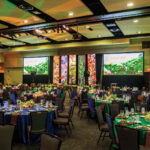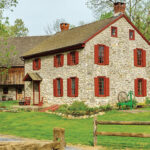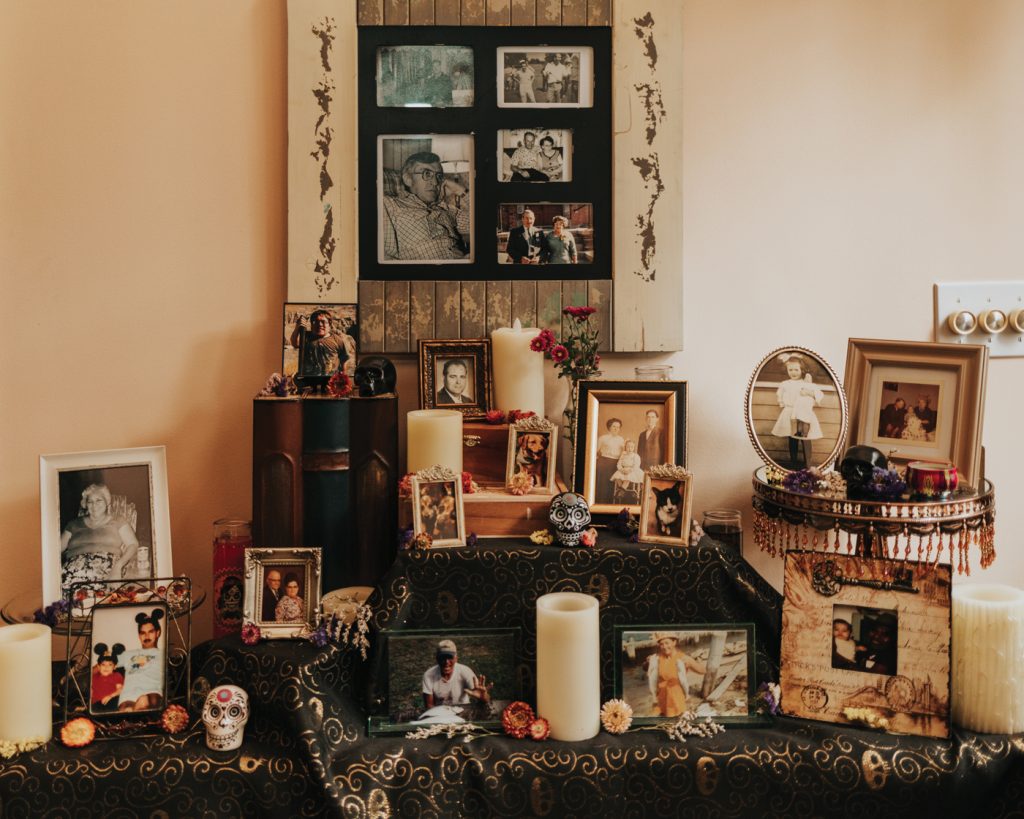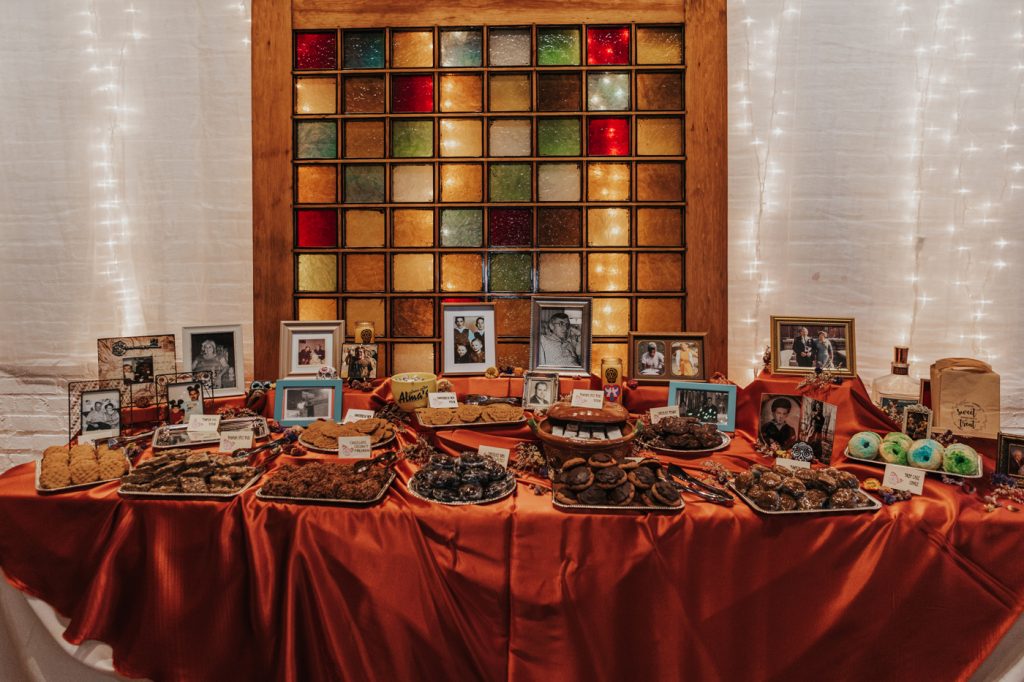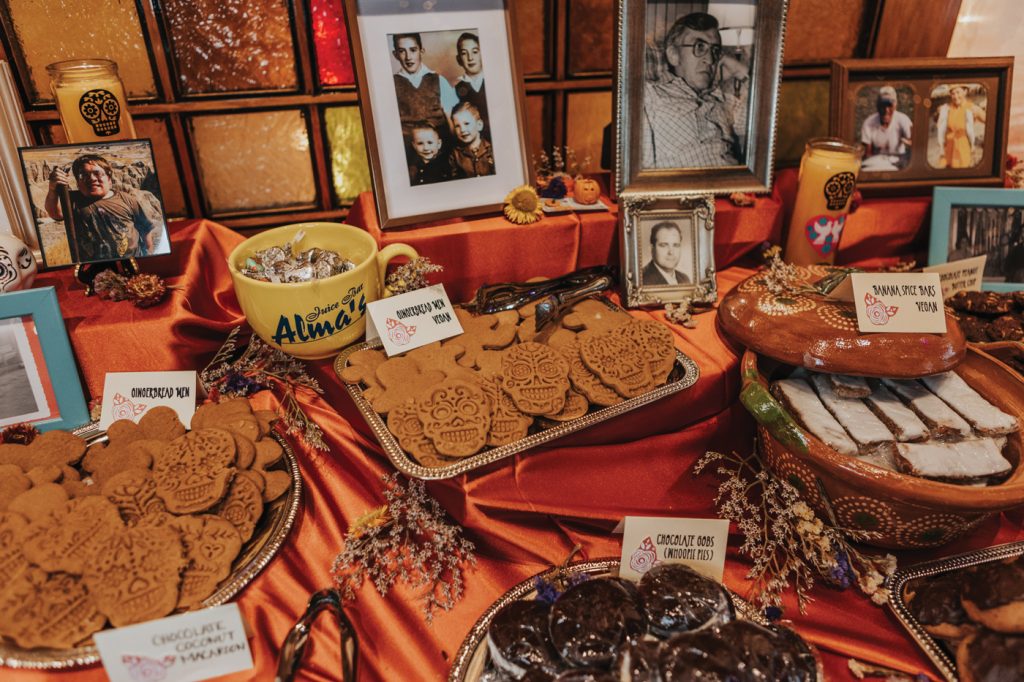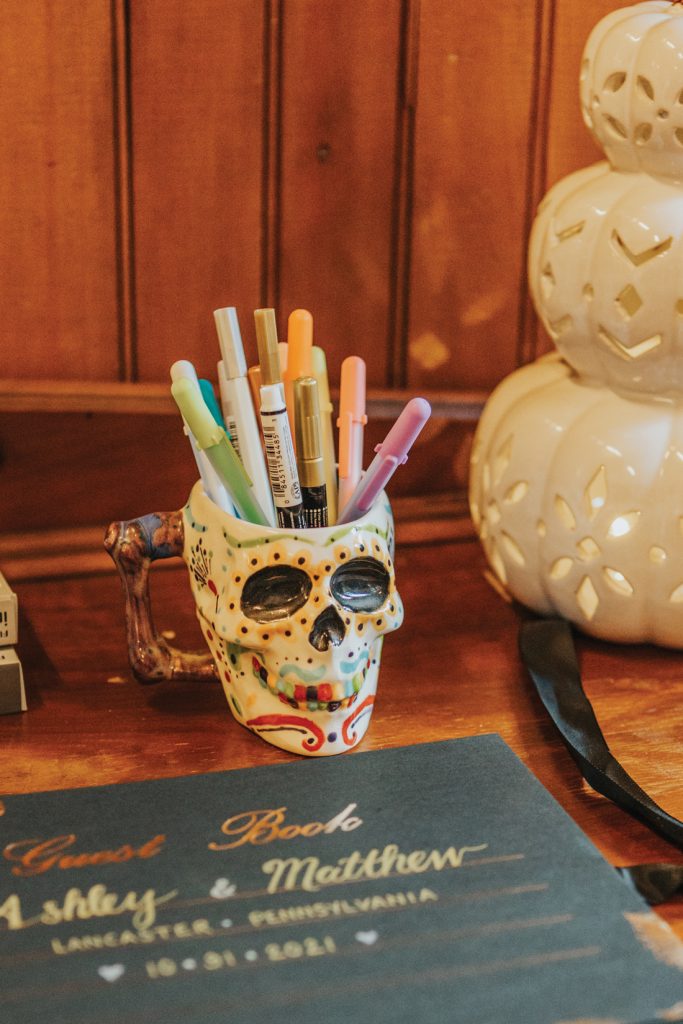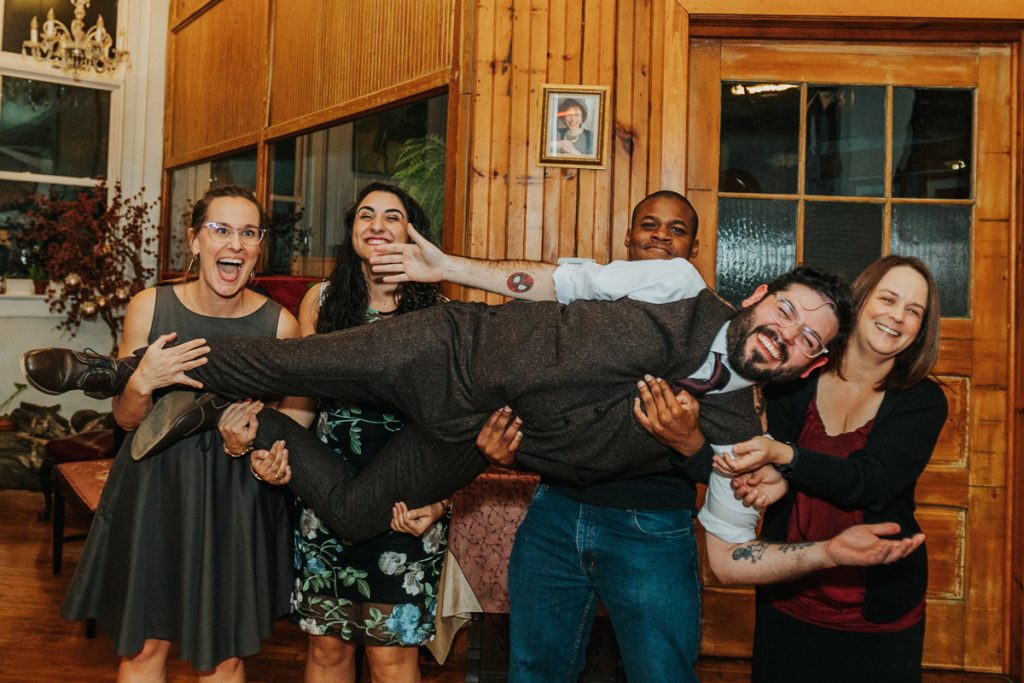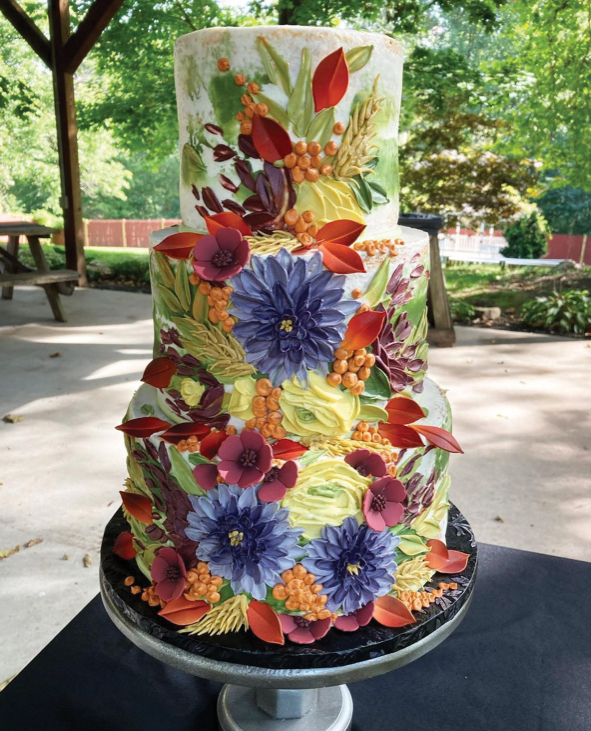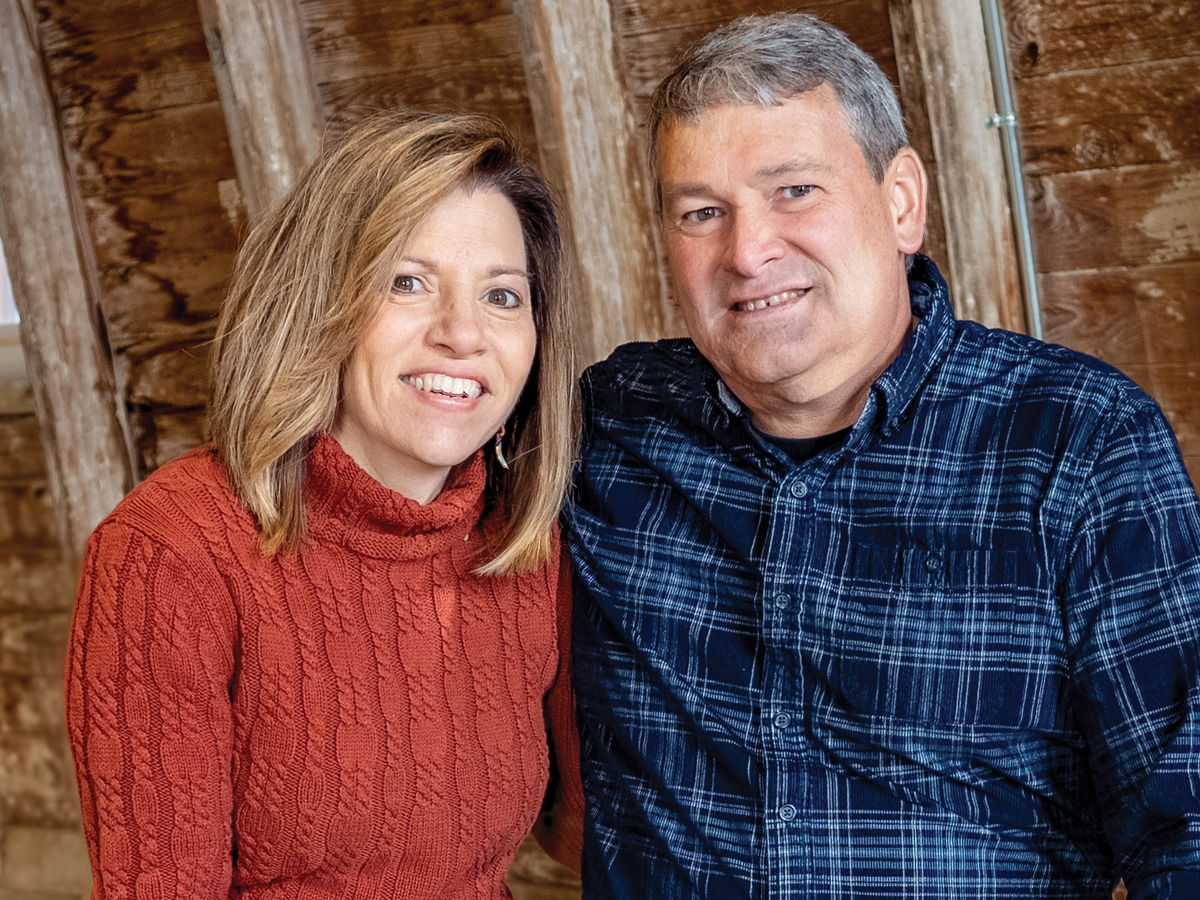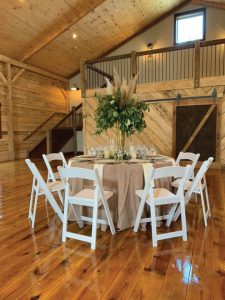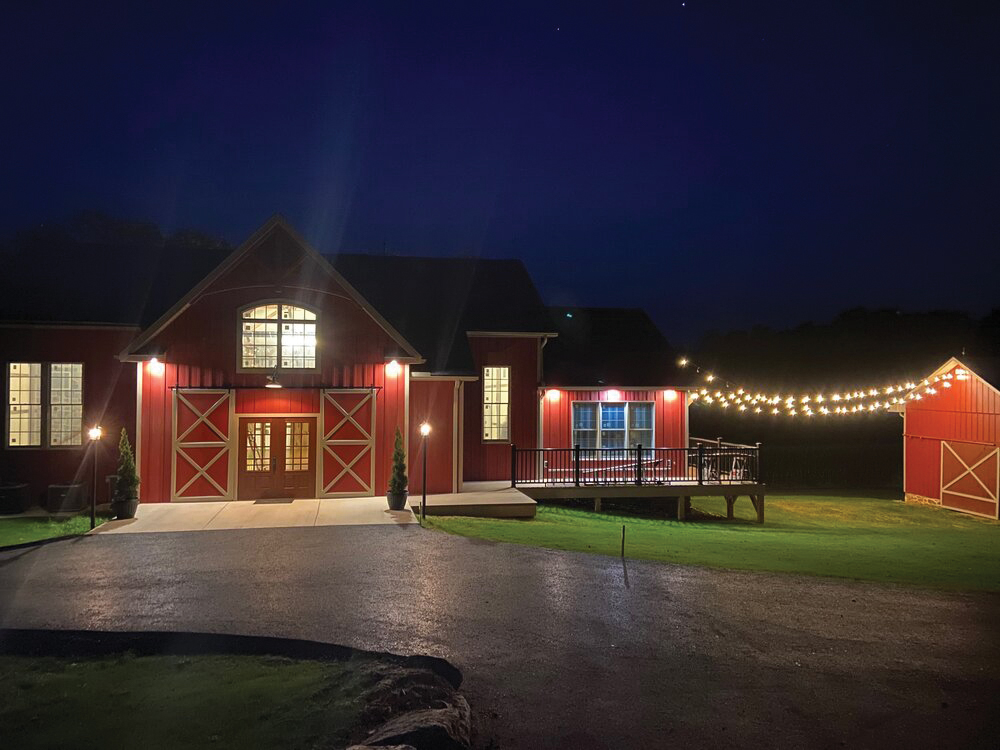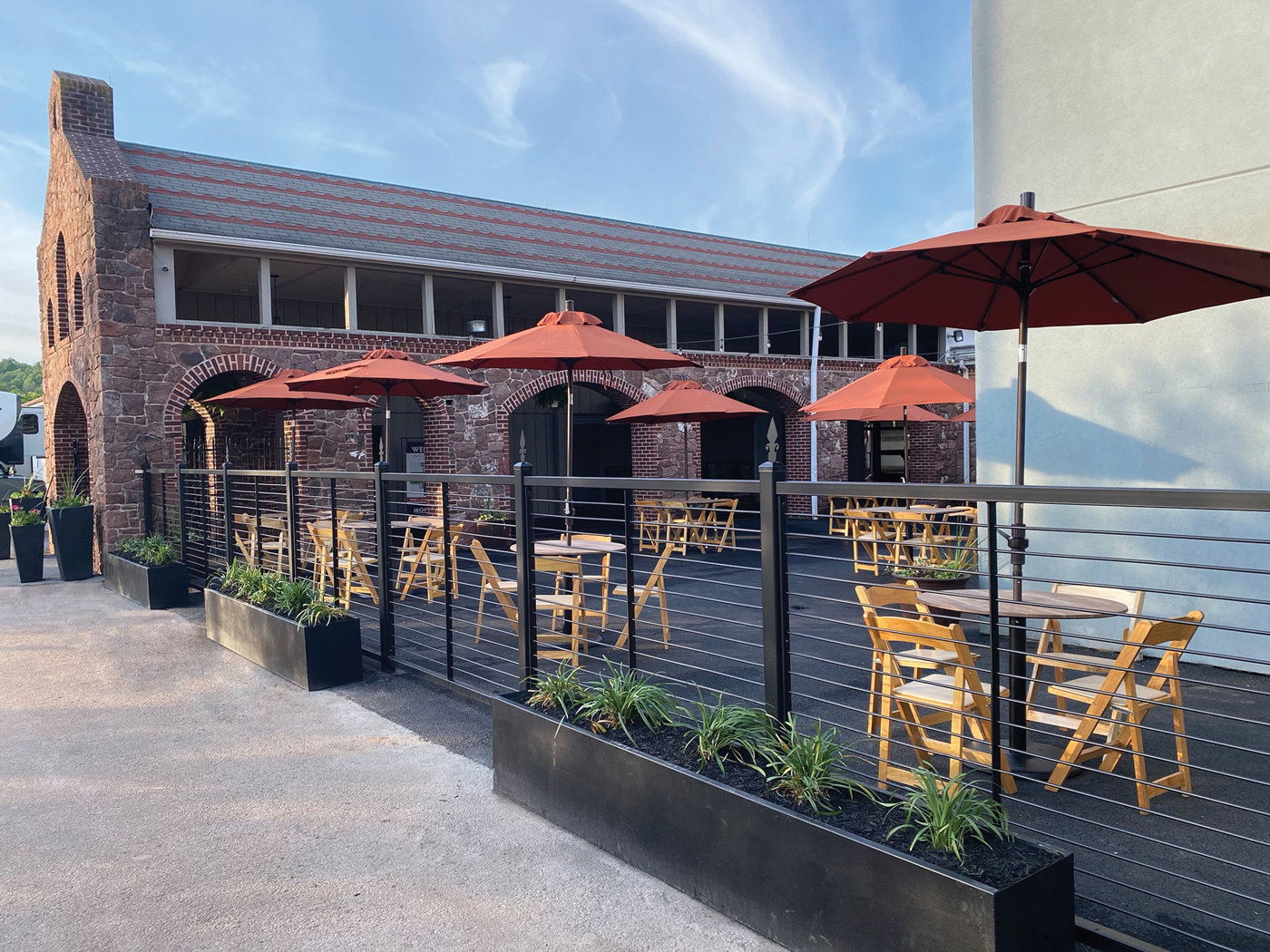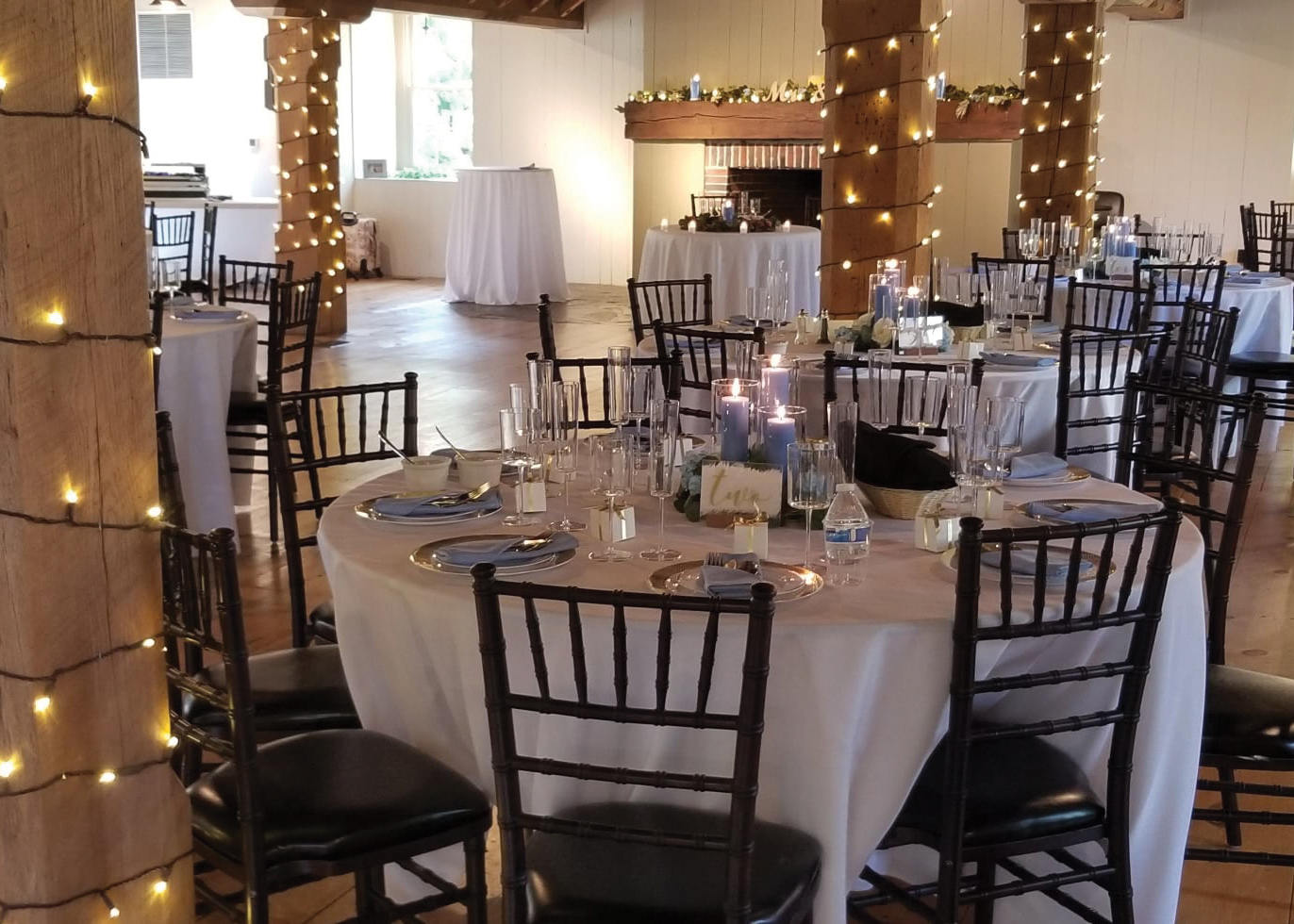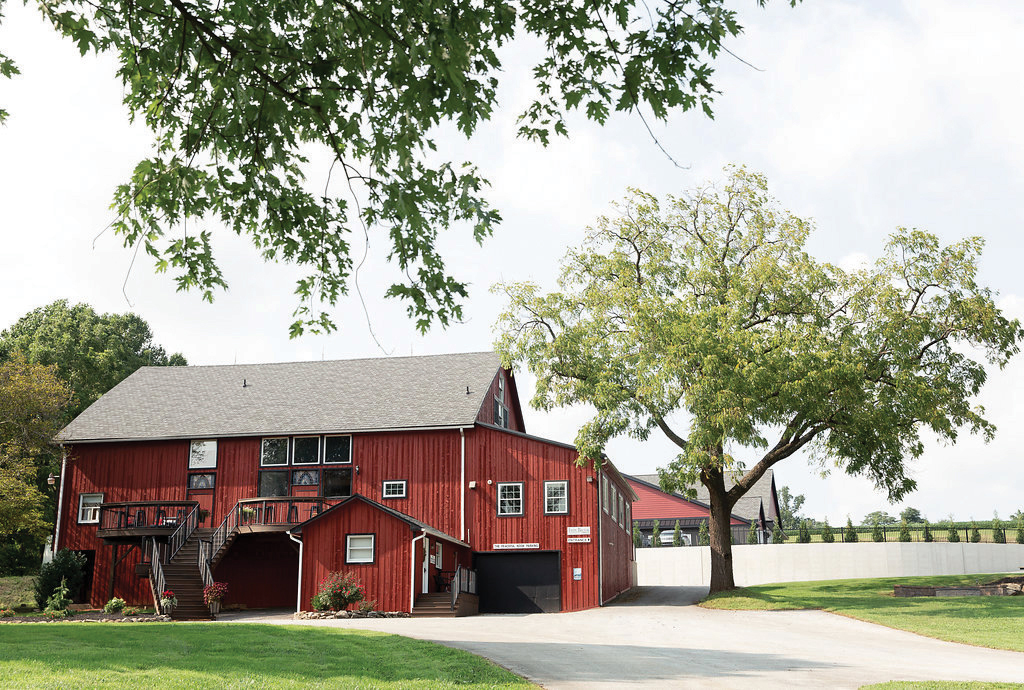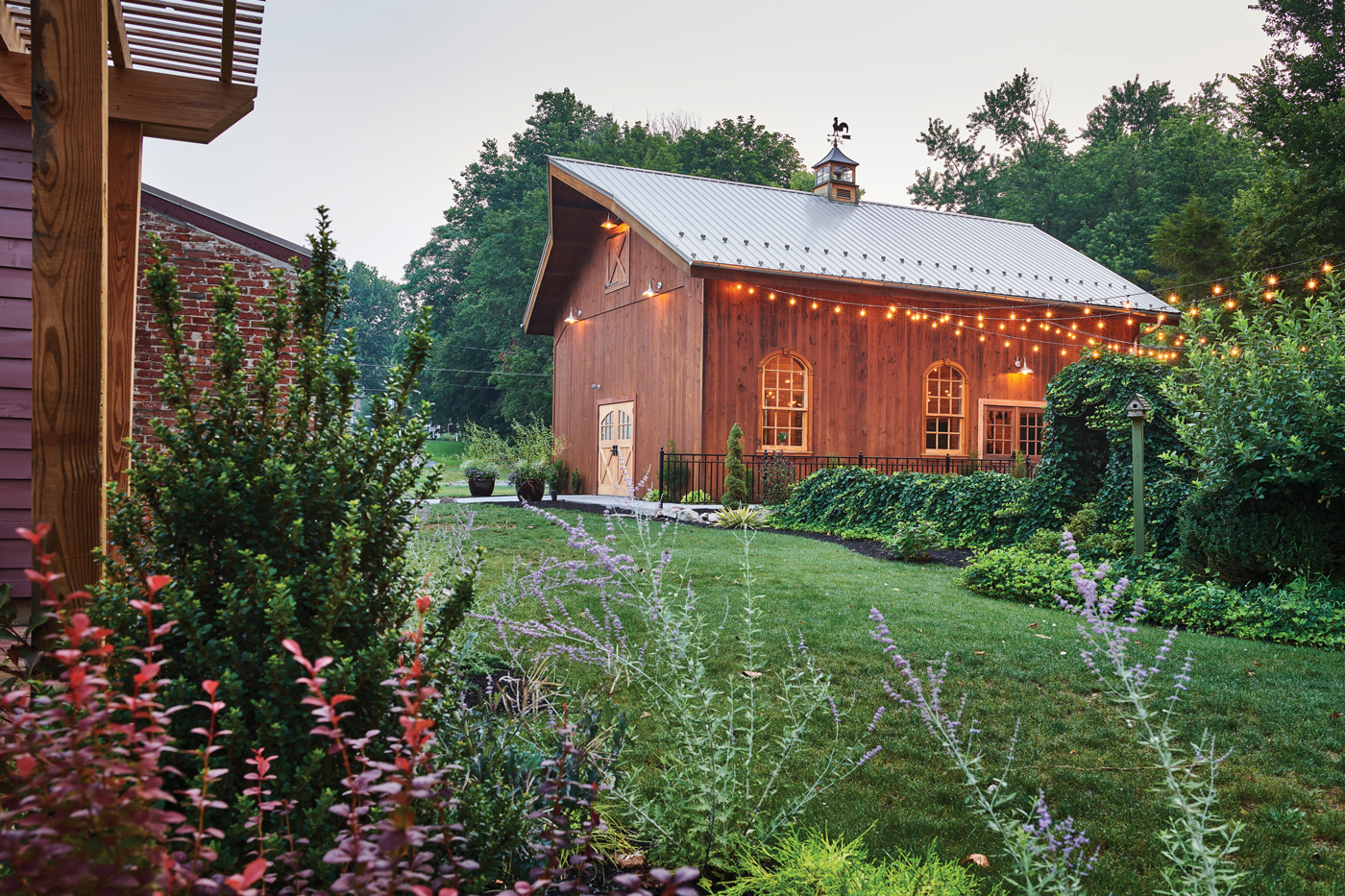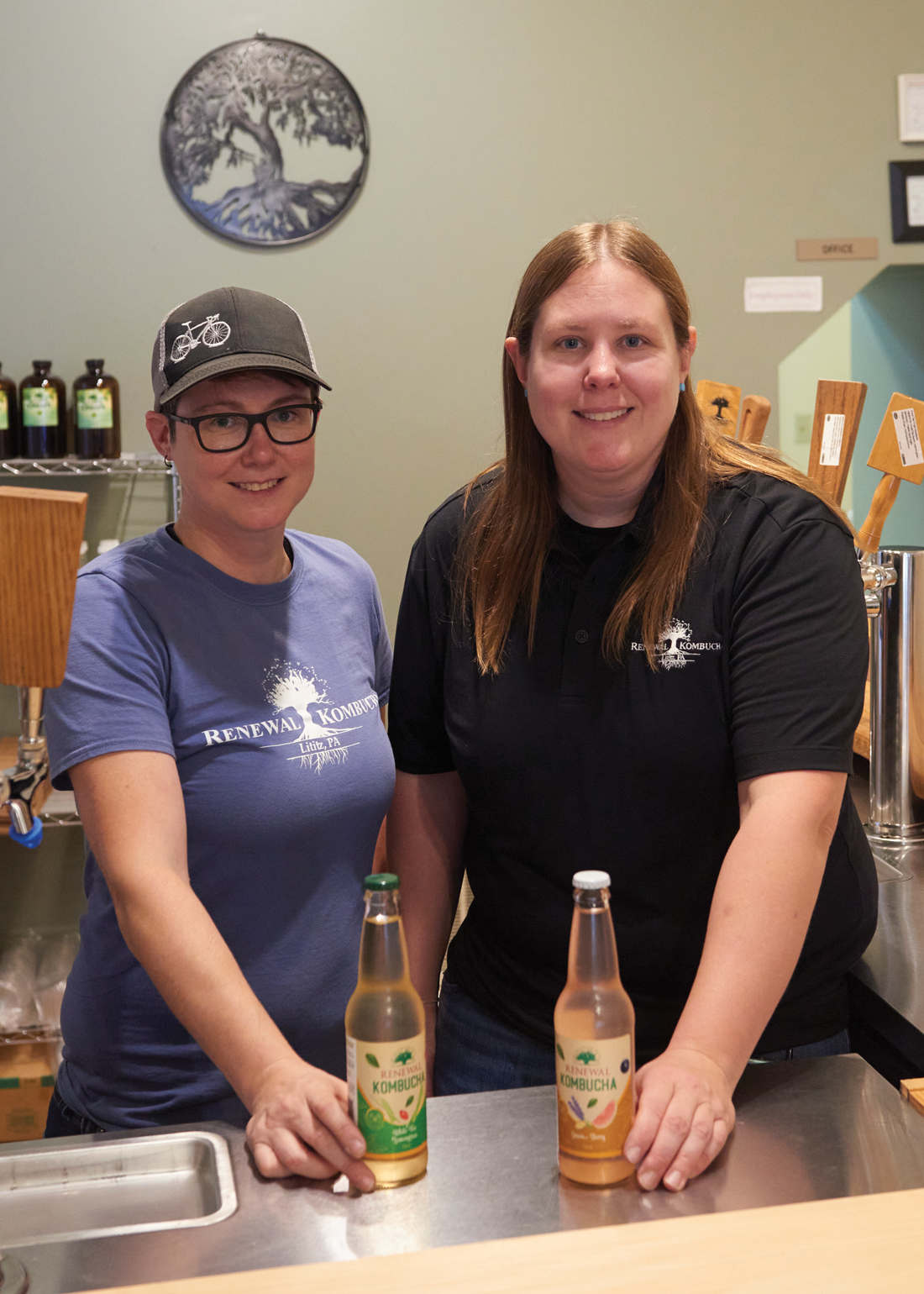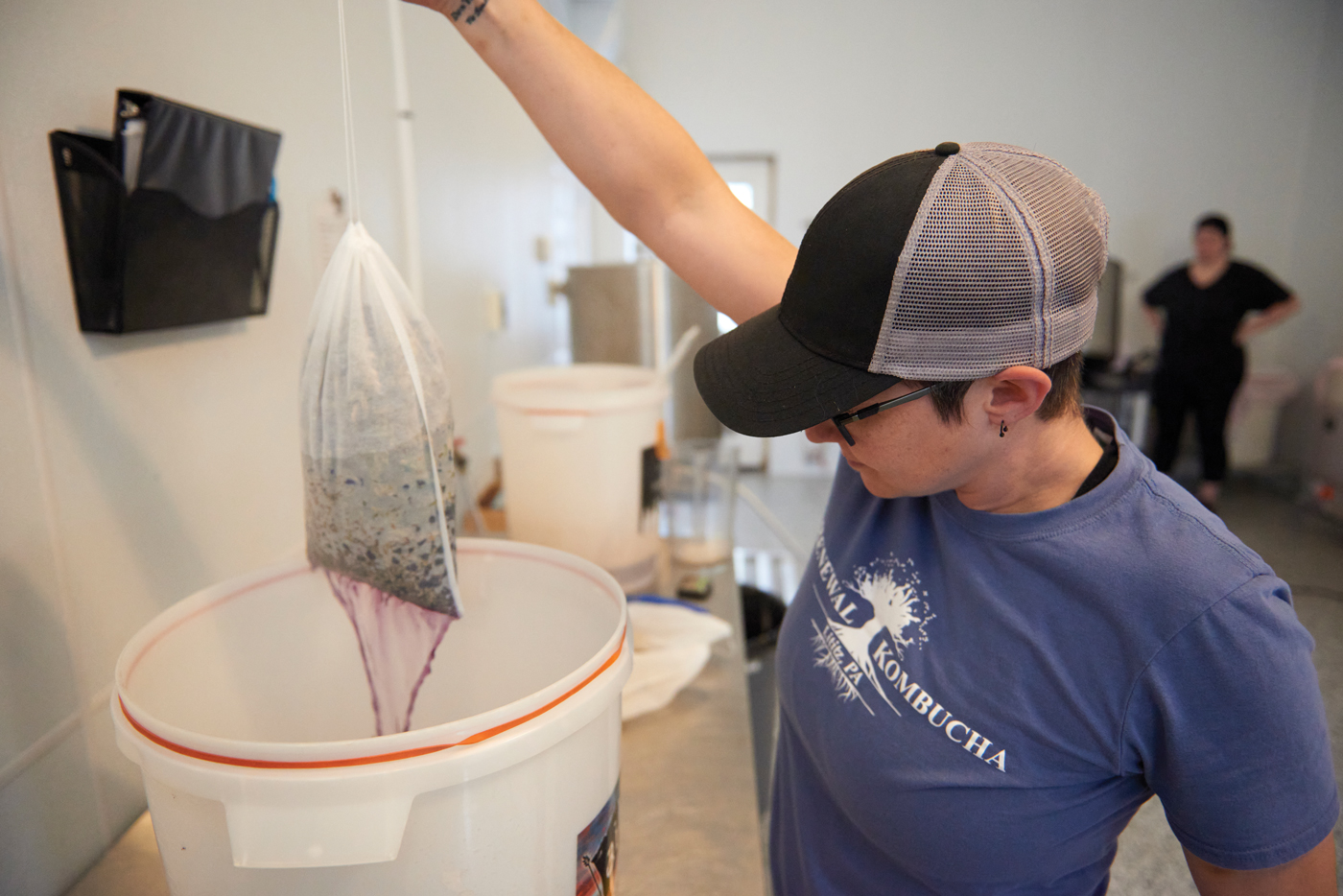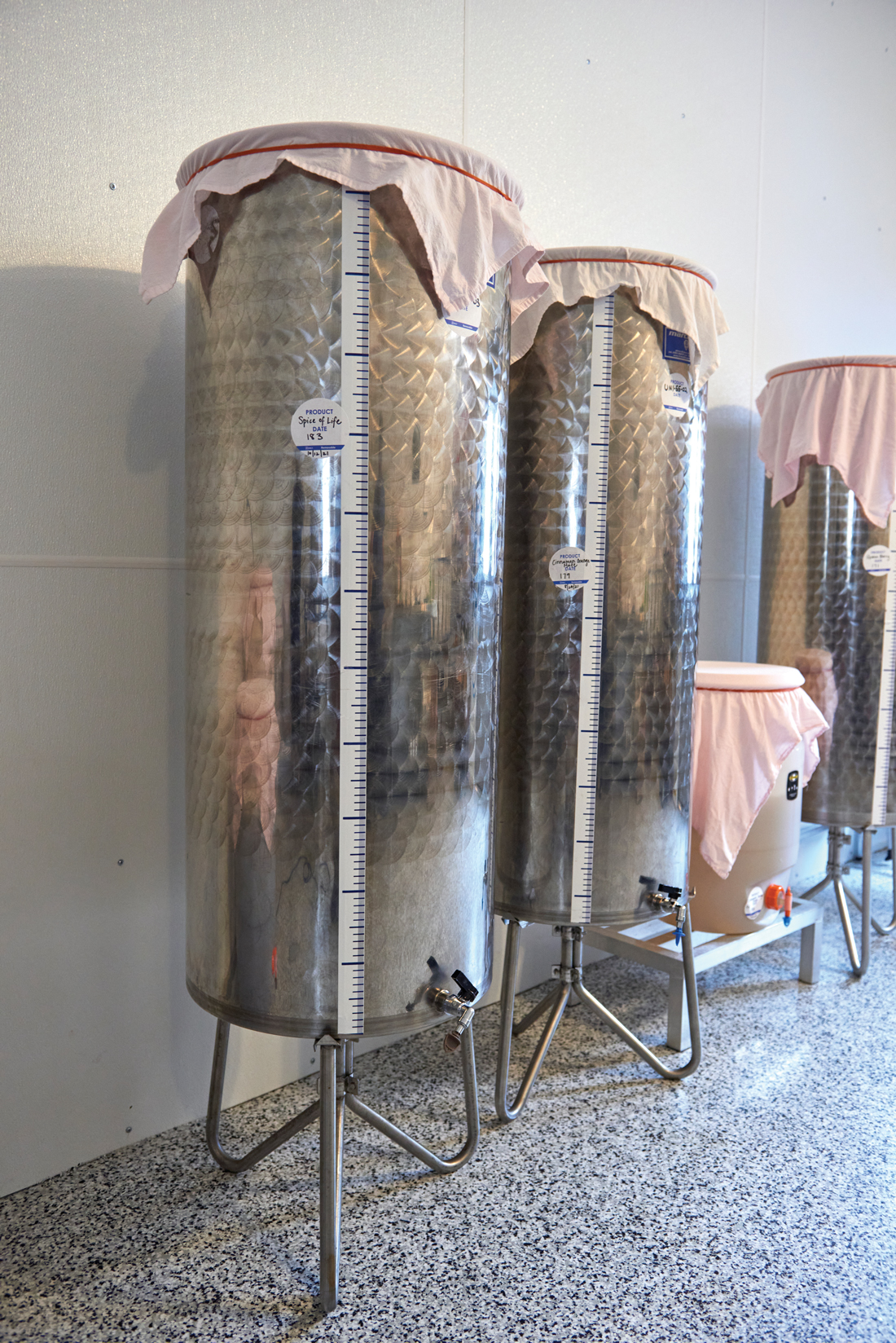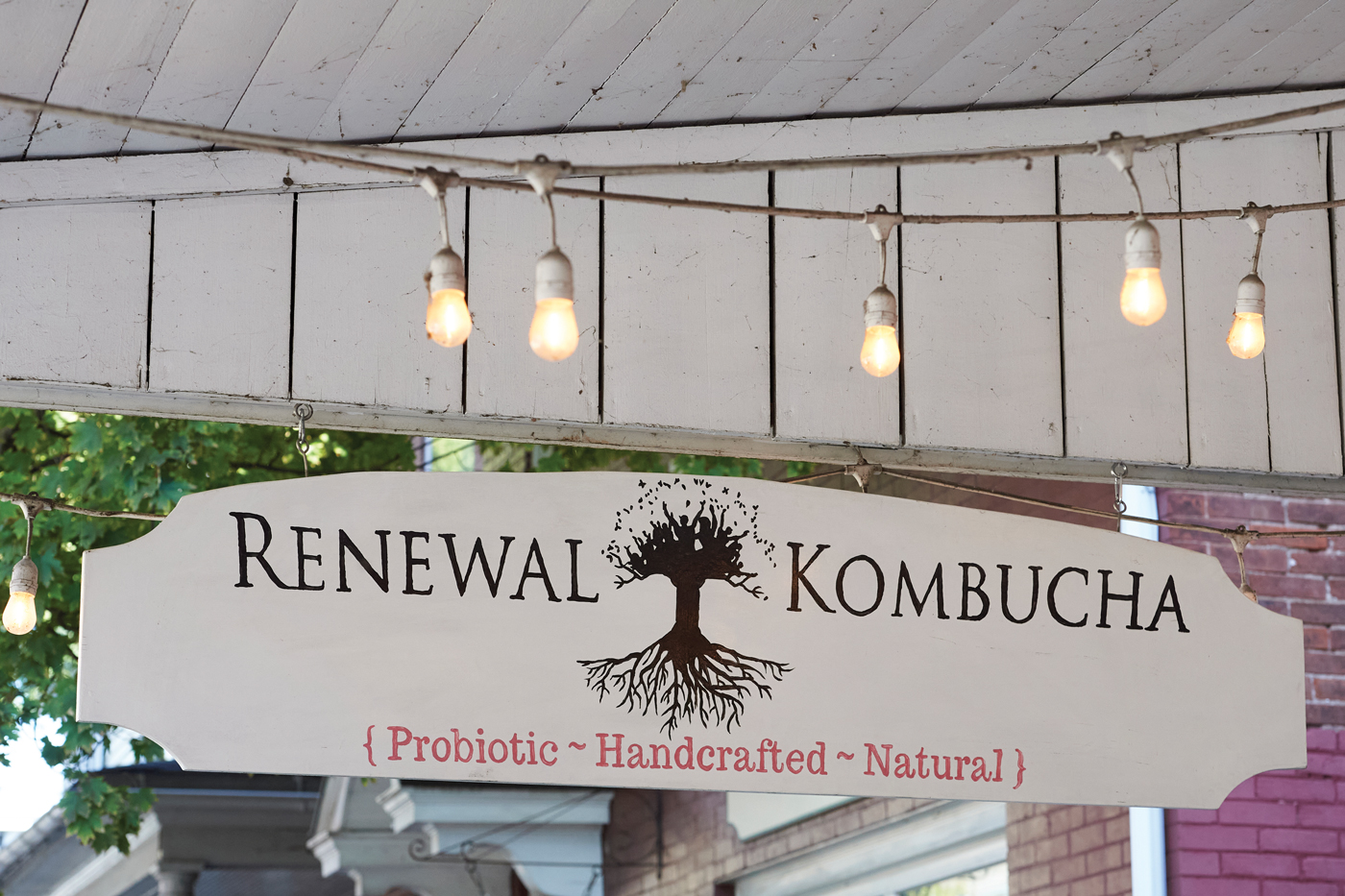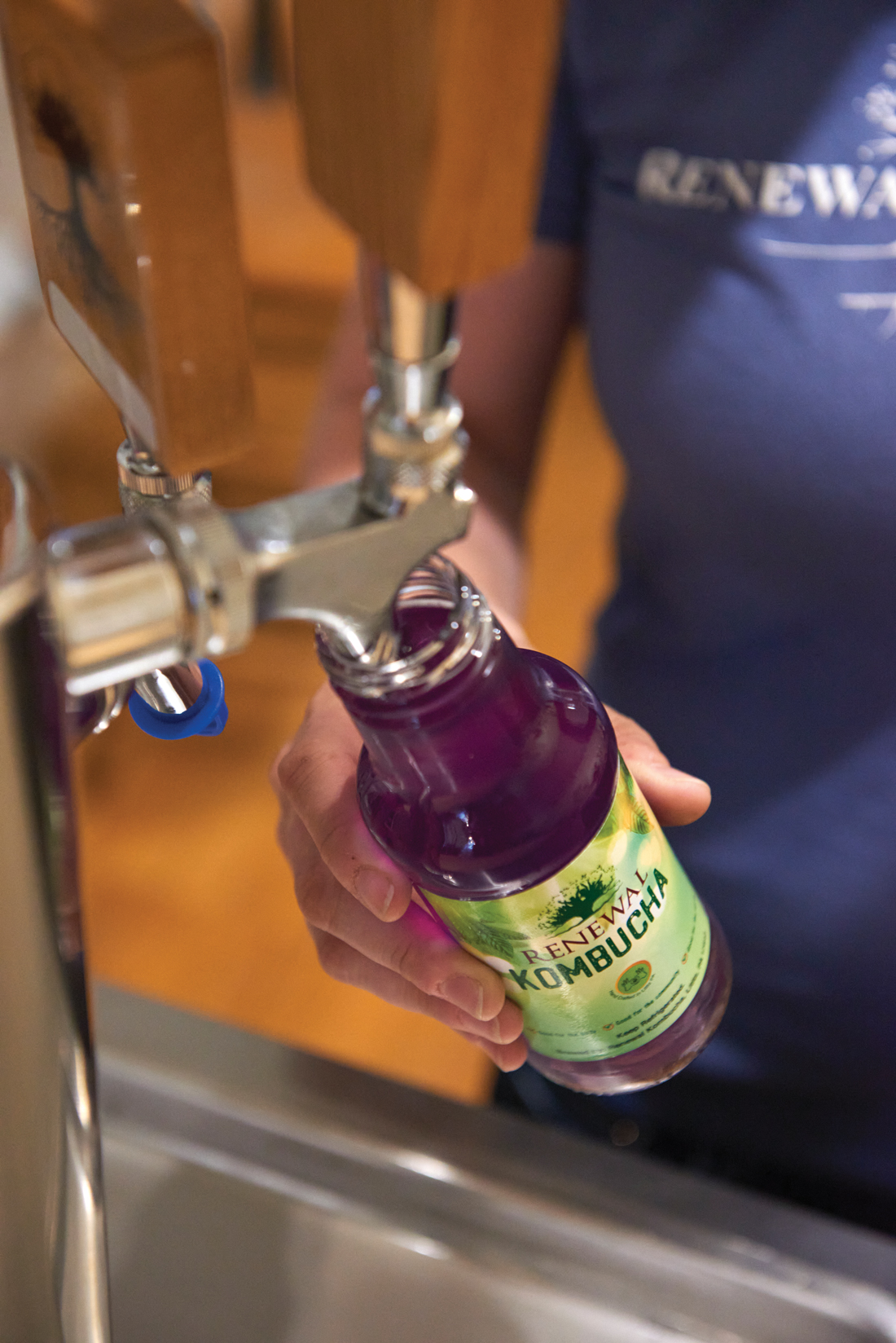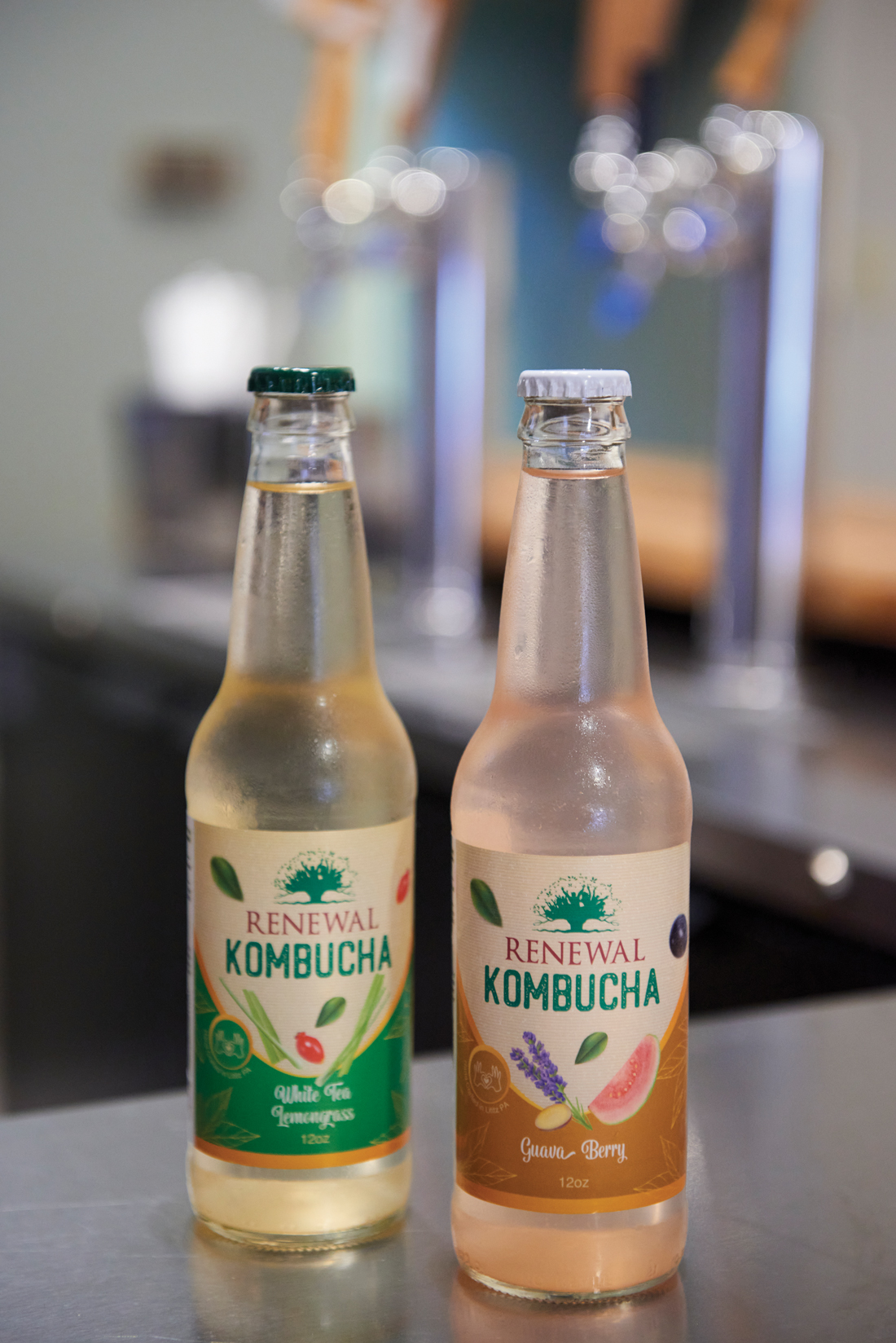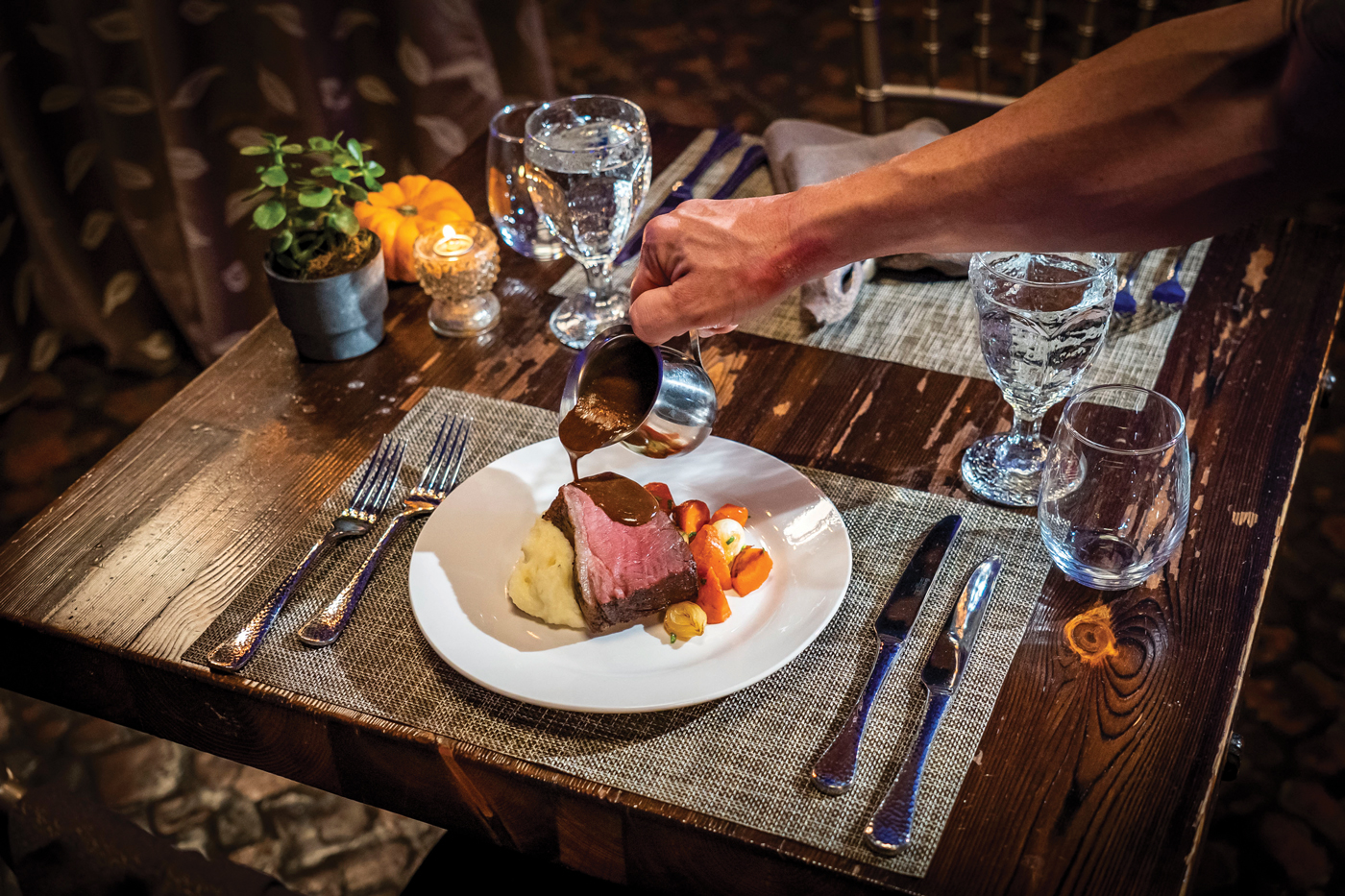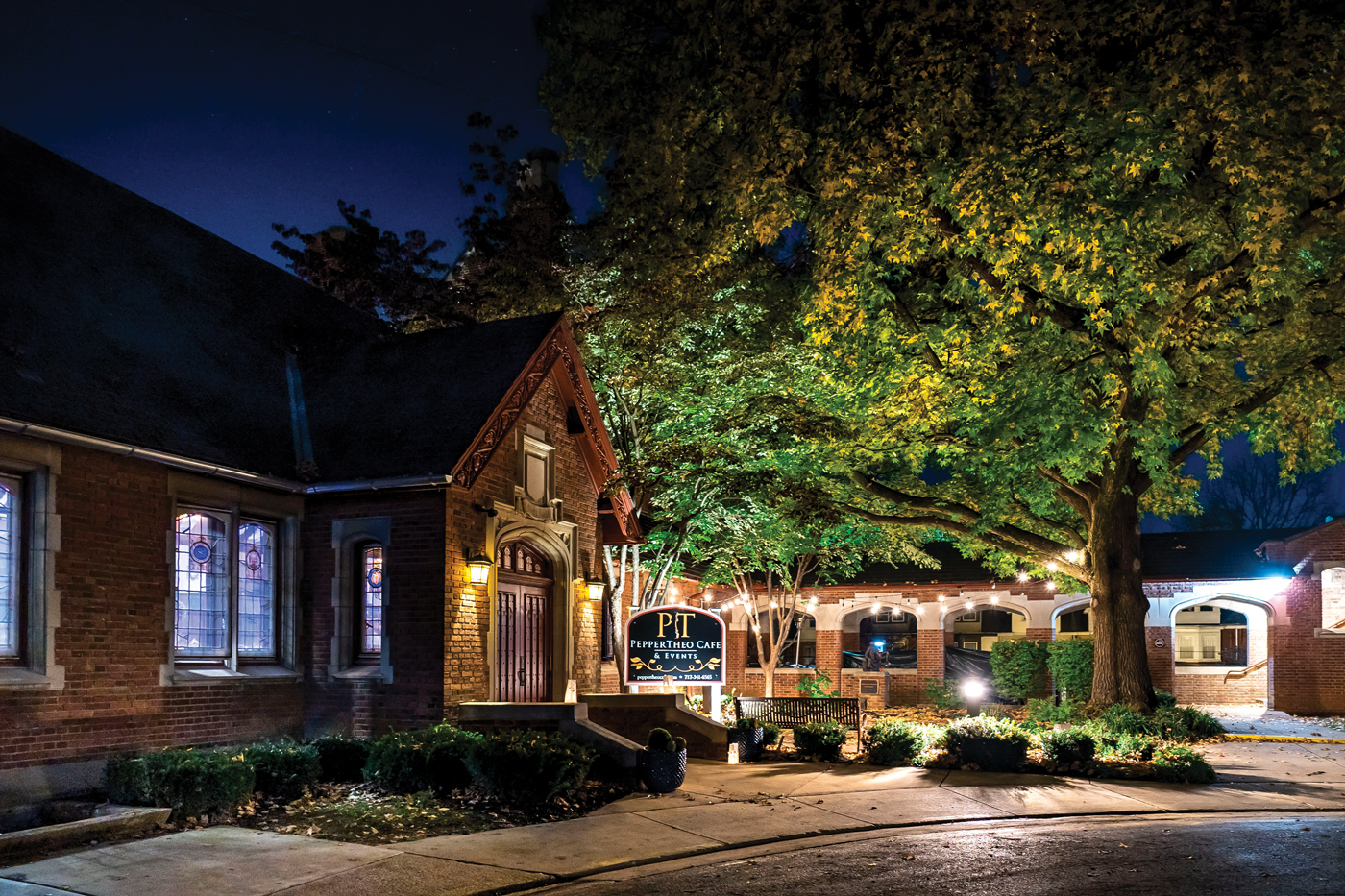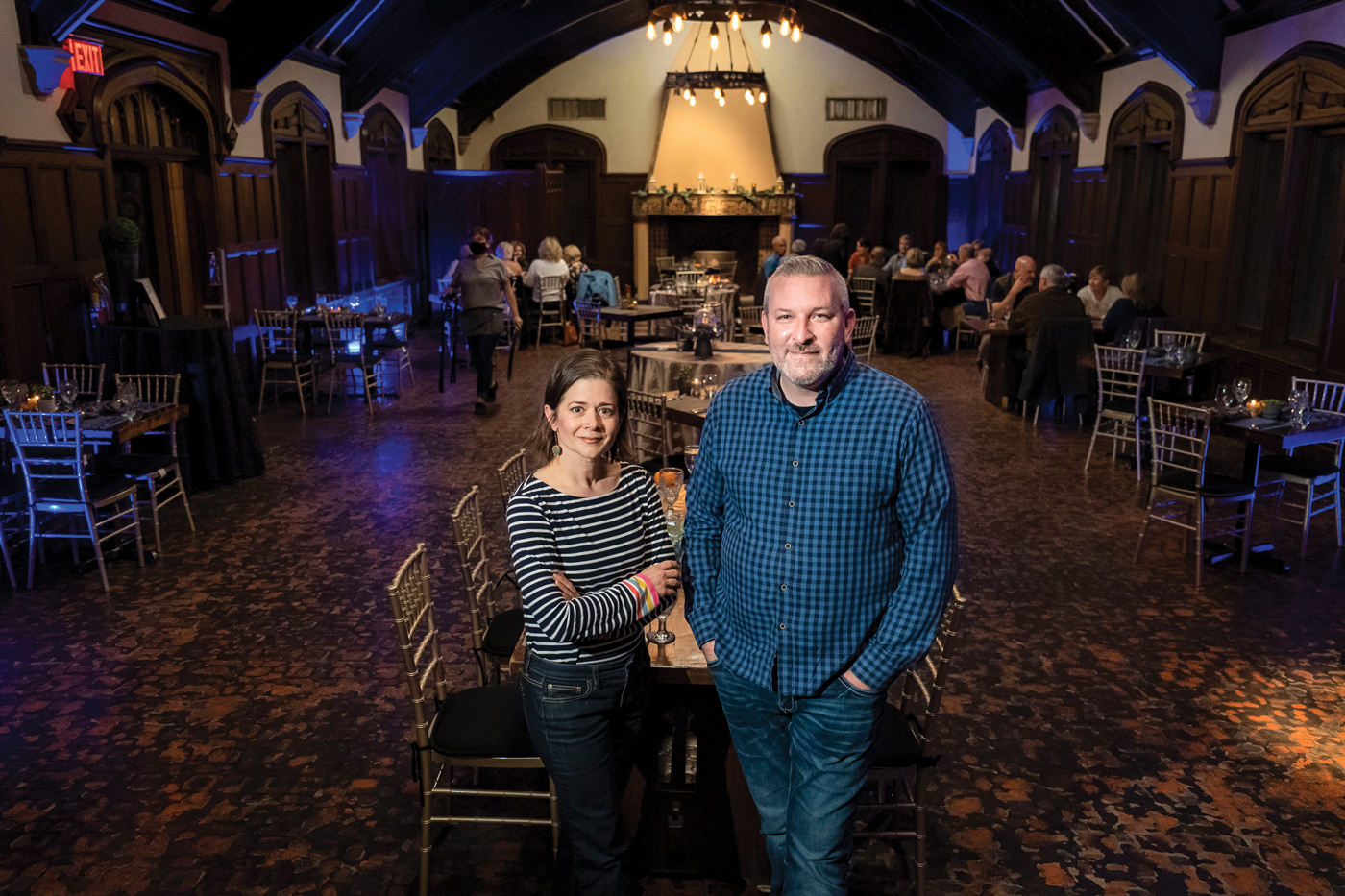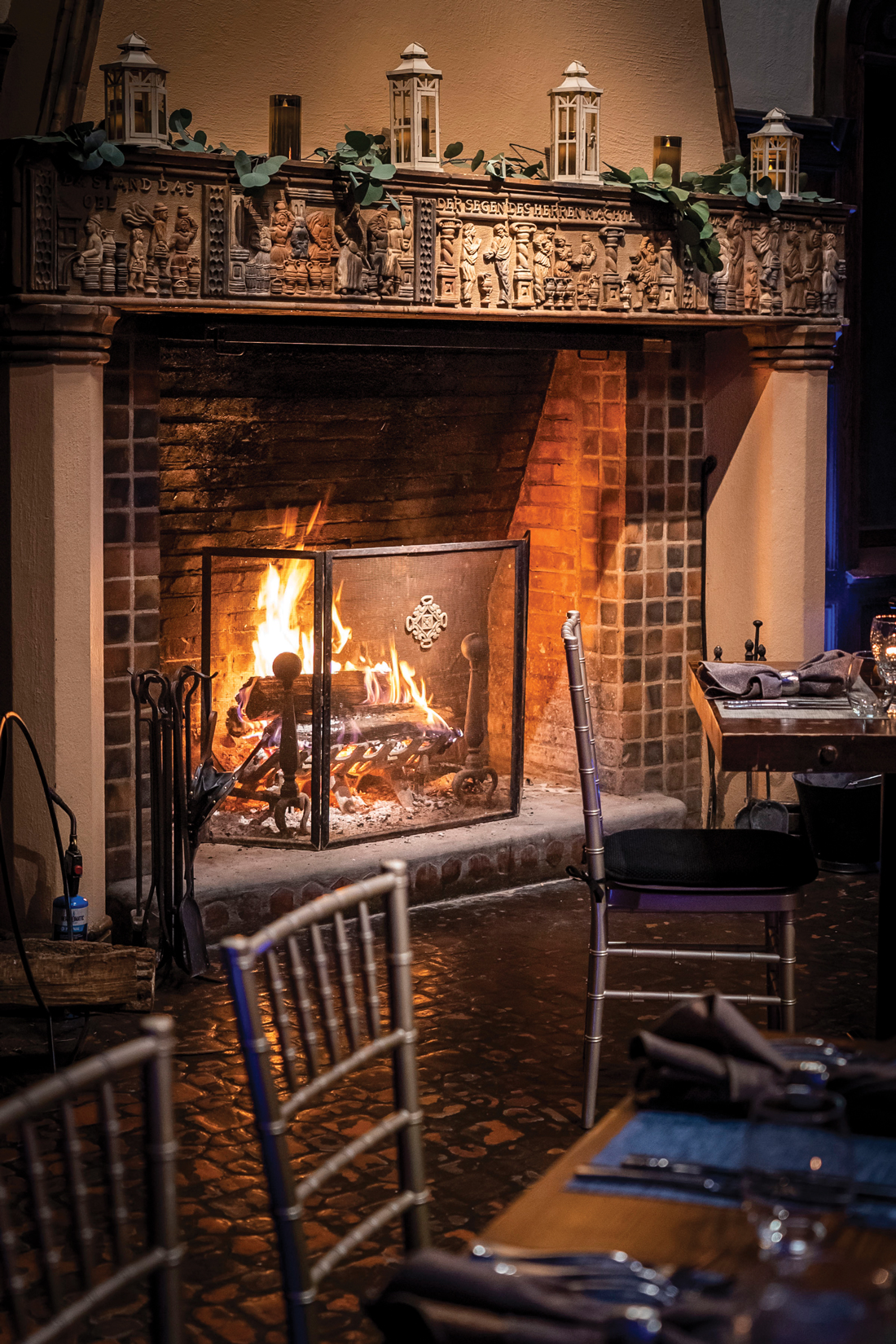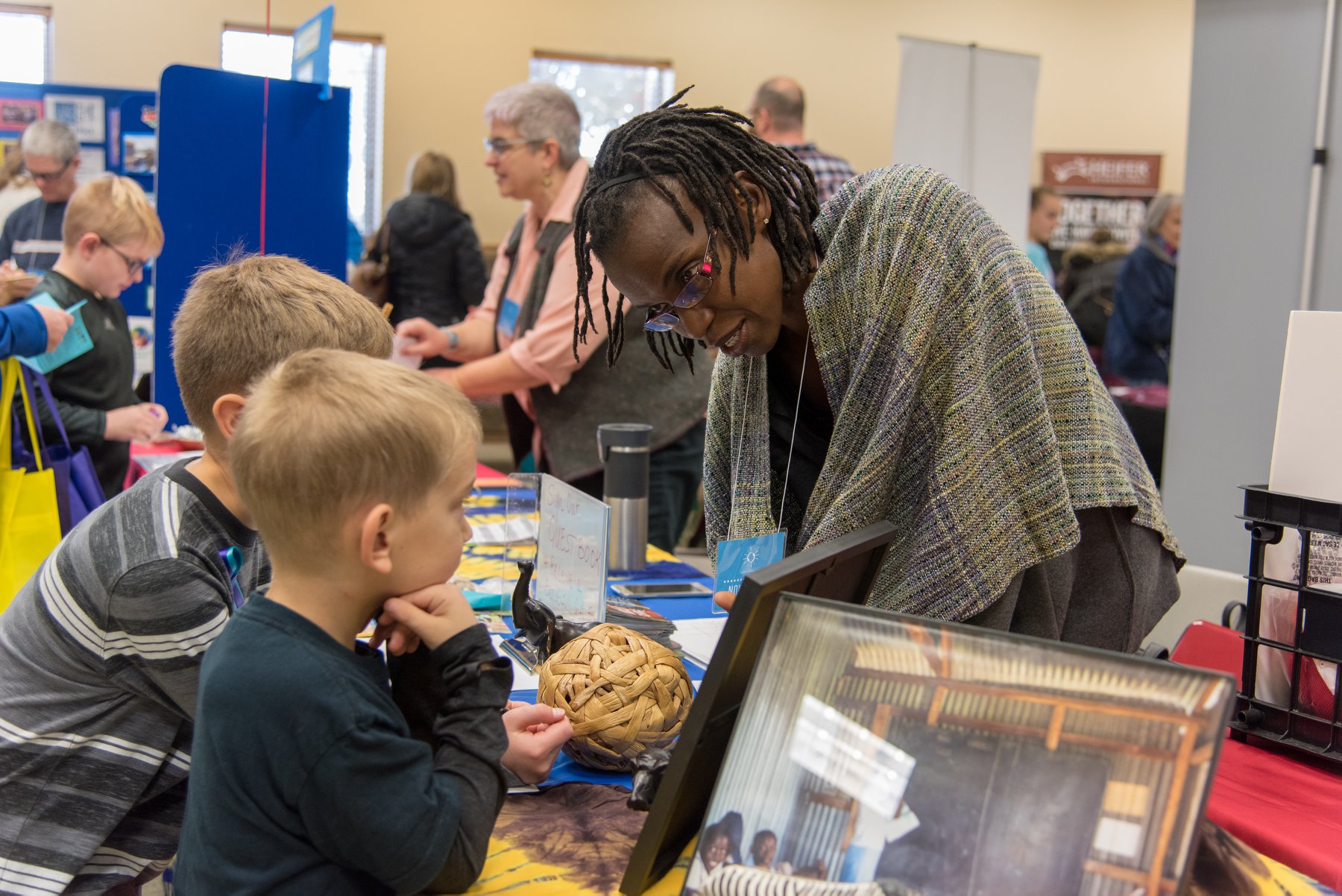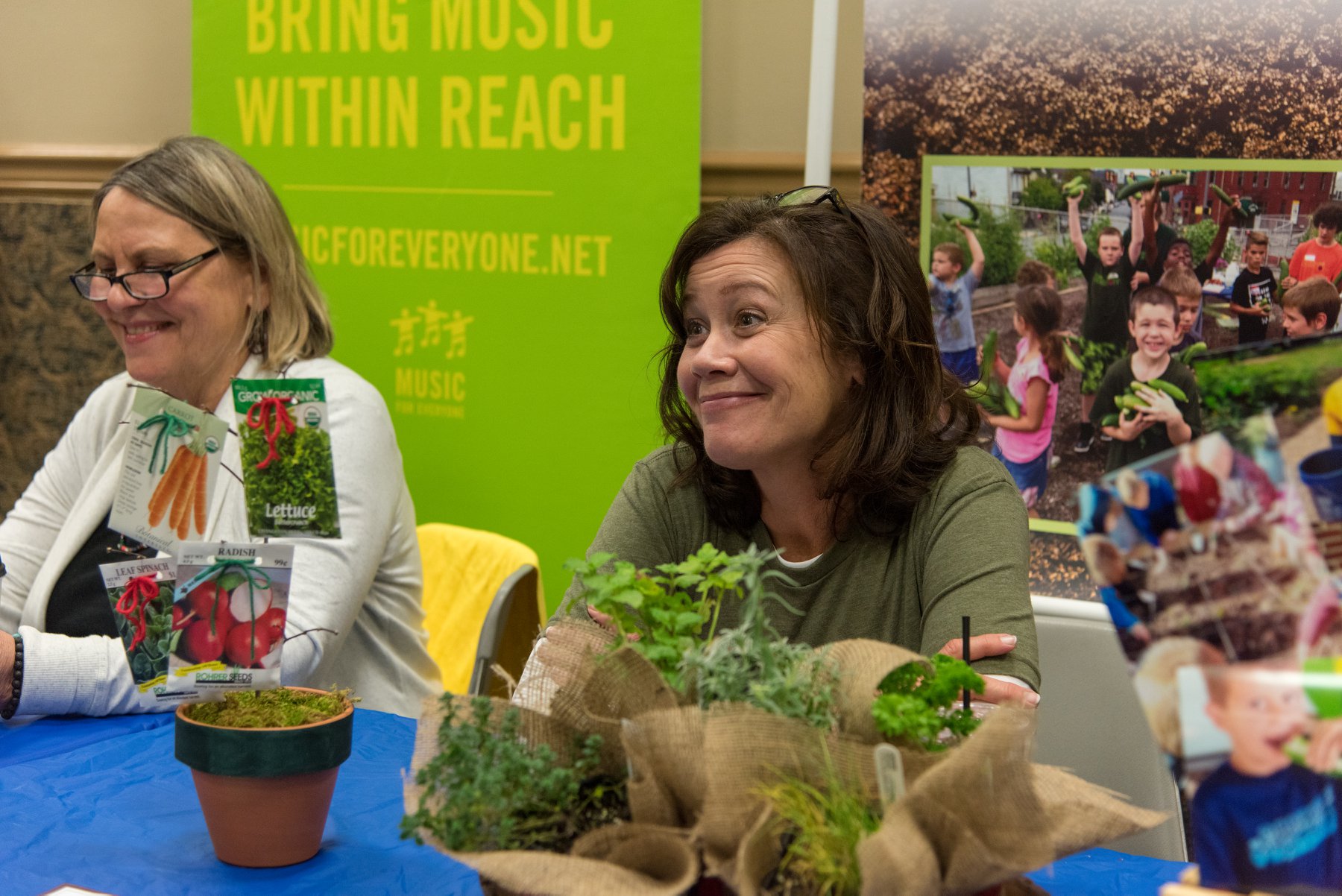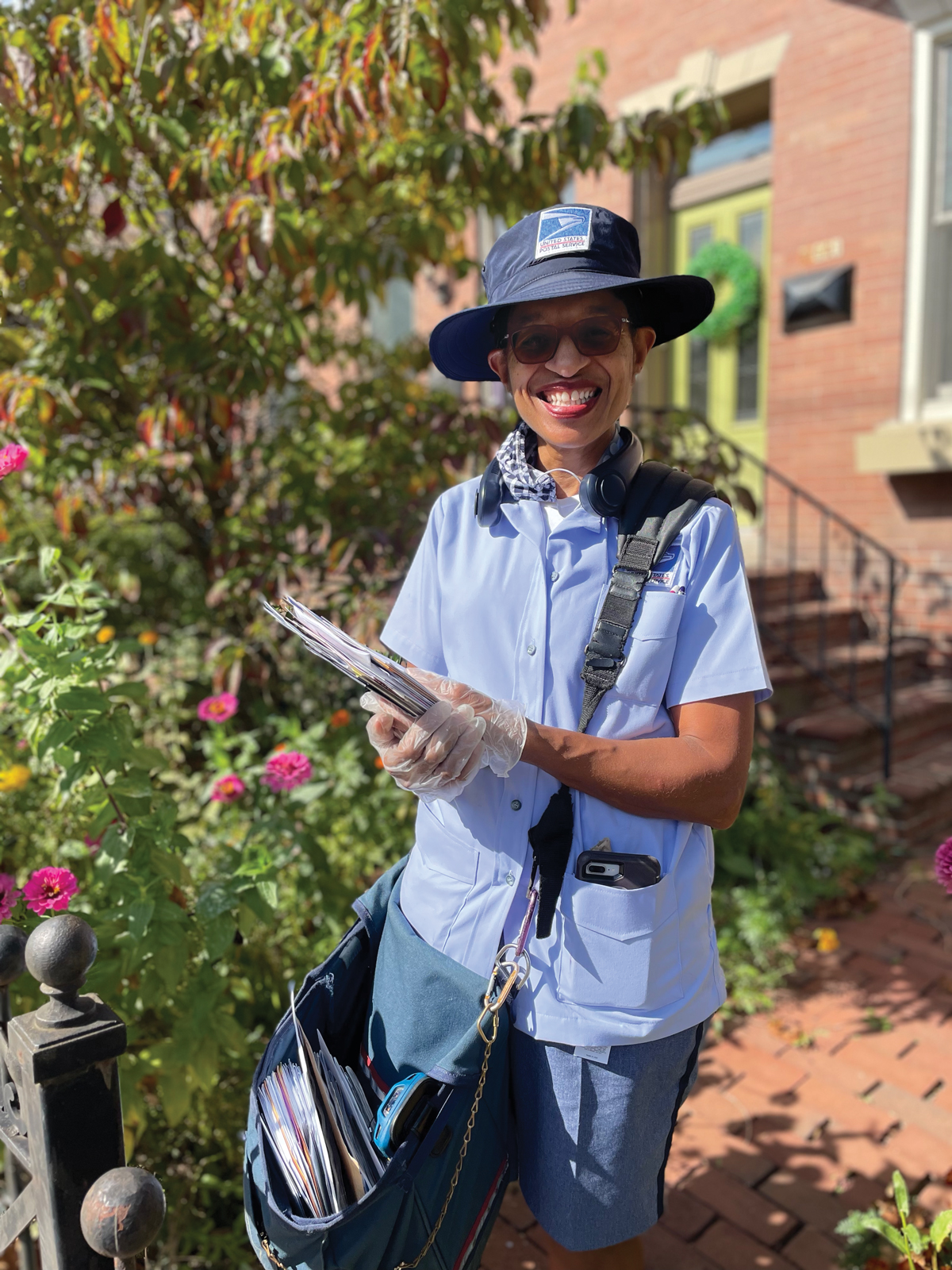Ashley Goss and Matthew Bushong
October 31, 2020 and October 31, 2021

Matthew Bushong and Ashley Goss were married on October 31, 2020, at the home of her parents and hosted their wedding/anniversary reception a year later on October 31, 2021. Because they love the city, many of their photos – from both dates – utilized scenic and historic backdrops. For example, this shot was taken at the Shreiner-Concord Cemetery, which is located at the corner of Mulberry and Chestnut streets.
“Covid changed our plans quite a bit,” says Ashley Goss. “We knew we couldn’t have the large wedding we had originally envisioned, unless we wanted to delay it further. We weighed our options and decided we couldn’t wait any longer to officially tie the knot,” she says, referring to her and Matthew’s 10-year-long relationship. A celebratory reception would have to wait.
When Ashley Met Matthew
Ashley, who is a branch manager for Lanco Federal Credit Union, met Matthew at a party some co-workers were having to mark the end of summer. Matthew, who is a children’s library assistant at Lancaster Public Library, had tagged along with Reid Cummins, one of Ashley’s friends and co-workers. “That was 10 years ago,” she says.

Matthew and Ashley re-enact his proposal that was delivered atop a city parking garage on a snowy day in 2018.
The two discovered they shared a wide range of interests, including a love of snow days. “One of our favorite things to do on a snowy day is to explore the cold, quiet, snow-filled city,” she explains. On a snowy day in March 2018, Ashley and Matthew went for a walk that ended atop the Penn Square Parking Garage. That’s where Matthew proposed. “It was a perfectly romantic moment that ended in an amusing snowball fight,” she recalls.
Not wanting to rush into things, the two decided they would take their time in planning their wedding. Finally, after a few months, they shared the news of their engagement with family and friends, announcing the wedding would be held at Mulberry Art Studios on October 31, 2020. They lined up their vendors and waited for their big day to arrive.
“Little did we know that Covid would cause our plans to change quite a bit,” Ashley says.
Pivot Time
As 2020 progressed, it became obvious to Ashley and Matthew they would need to alter their plans. “We contacted our vendors to determine what would happen with our contracts,” Ashley explains. “Fortunately, they all basically gave us the ability to cancel the contracts or reschedule.” Ashley and Matthew considered their options and decided to get married on October 31, 2020, and postpone their reception to October 31, 2021. “We really wanted to get married and we really wanted to have the opportunity to celebrate with our friends and family once Covid settled down, so we planned a ceremony for 2020 and a reception for 2021,” she explains.

Ashley and Matthew exchanged vows through conducting a self-uniting ceremony that is permissible in Pennsylvania. Such ceremonies are often referred to as “Quaker weddings.”
Their new plan called for moving the ceremony and a small family gathering to the home of Ashley’s parents, Marcia and Robert Goss, who reside in Conestoga. The festivities were livestreamed via Twitch to family and friends who could not attend in person. The couple also announced that a wedding celebration would be held at Mulberry Art Studios on October 31, 2021.
Halloween? Think Again
In Mexico and other Central American countries, October 31 through November 2 is celebrated as Día de los Muertos. Many mistakenly assume it’s the Mexican version of Halloween. Instead, it’s a holiday that pays homage to those who have passed from the Earth.
The rituals connected to Día de los Muertos date back thousands of years, predating the Aztec and Mayan civilizations. The Aztecs, for example, believed that death was a process through which the deceased must travel though nine challenging levels before their souls reached Mictlān, or the final resting place. Loved ones would help the departed reach their final destinations by providing them with food, water and other necessities during Nahua ceremonies that were held each August.
Centuries later, the arrival of Catholicism and the influence of Spanish culture combined with the ancient rituals to create Día de los Muertos, which coincides with two Catholic observances, All Saints’ Day (November 1) and All Souls’ Day (November 2). Because of the growing Mexican and Latino populations in the United States, Día de los Muertos has become a part of American culture in places like Texas, the Southwest and California.
While Día de los Muertos shares similarities with Halloween, it remains rooted in ancient beliefs that hold that beginning at midnight on October 31 and continuing through November 2, the border between the spirit world and the living world dissolves, allowing the departed to reawaken and return to their loved ones (children on November 1 and adults on November 2) for 24-hour periods.
The ritual of welcoming back the dead takes place in cemeteries – where graves are laden with food and drink, candles and flowers – and in homes, where altars (or ofrendas) are filled with photos, food, candles and other mementoes of the departed. Marigolds create colorful paths through cemeteries – it is believed the dead rely on their color and scent to lead them home.
Skulls and skeletons – some exhibiting vibrant colors – are part of the costumes and parades that accompany the event. Monarch butterflies, which are believed to hold the spirits of the dead, also play a role, as their return to Mexico typically begins on November 1.
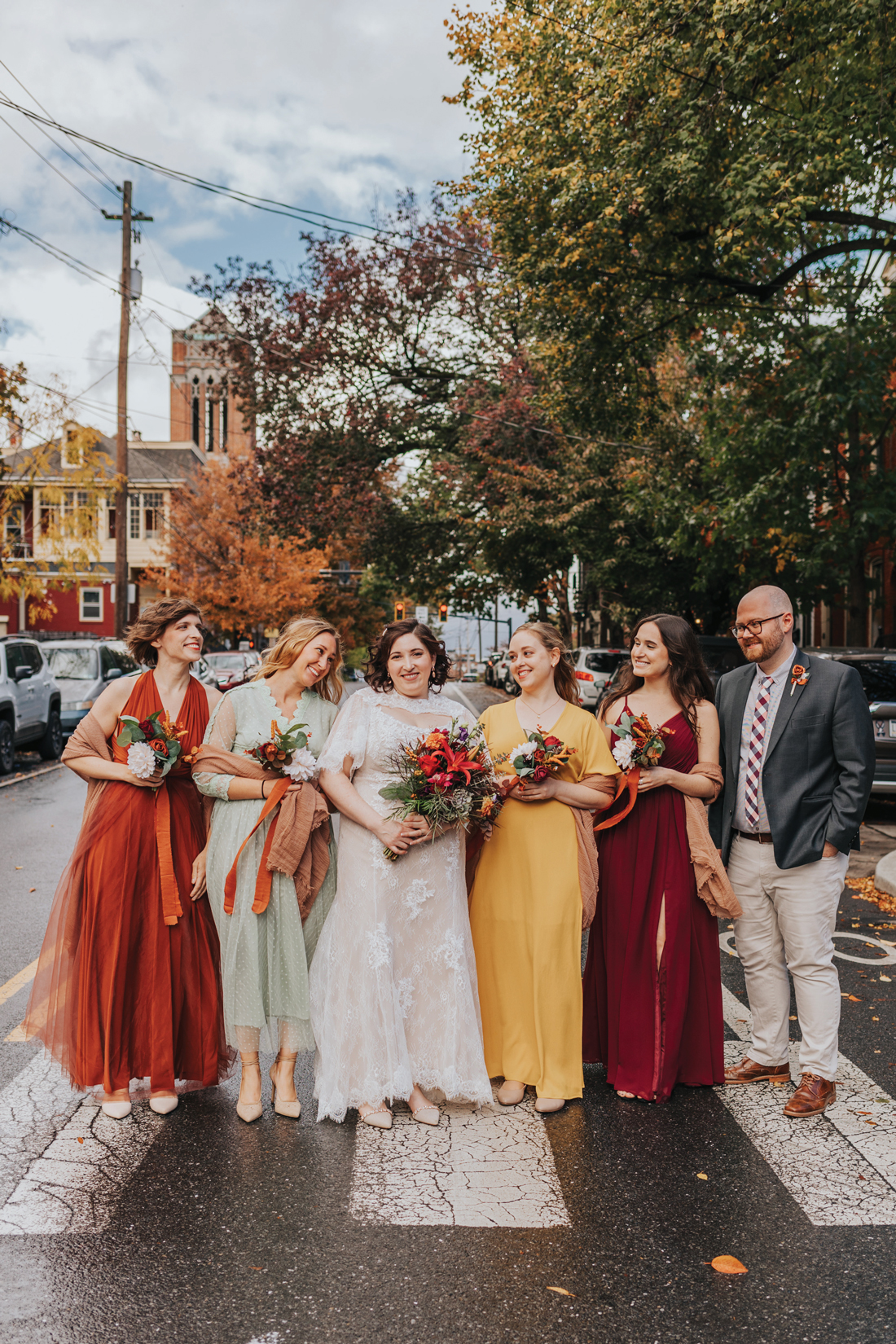
Ashley and Matthew invited their attendants and groomsmen to choose their own attire for the reception. In the case of Ashley’s female attendants, each was assigned a color.
The holiday provided Ashley and Matthew with a canvas for designing the look of their wedding. The color scheme took its inspiration from the vibrant color palette that accompanies Día de los Muertos. Warm tones of gold, yellow and orange were paired with shades of purple, maroon and red through florals such as marigolds and chrysanthemums and even fallen leaves. Ashley’s dress and shawl reflected Día de los Muertos’ colorful backdrop.
Ashley’s bouquet tied into her and Matthew’s love for exploring the city, which was commemorated with a pre-wedding photo shoot with their photographer, Margarita Stamatelopoulos, who was a classmate of Matthew’s at The Art Institute of Pittsburgh. “We thought that rather than have a bouquet made for me, why not create one at Lancaster Central Market and have Margarita photograph the event,” Ashley explains. The two turned to Central Market Flowers for help and loved the results. “The photos Margarita took of us picking out the flowers are some of my favorites from the whole day!” Ashley reports.
Ashley and Matthew utilized the same theme for their October 31, 2021, reception (in the industry, such events are being referred to as anniversary receptions), which included a video of the festivities from 2020.
The Unique Factor
Upon returning to her parents’ home from the photo shoot, Ashley and Matthew performed a self-uniting ceremony. “Only certain states allow such ceremonies,” she explains. “Because of the state’s strong Quaker heritage, Pennsylvania is one of them. In fact, they are often referred to as ‘Quaker weddings.’” She goes on to explain that such a ceremony entails the bride and groom announcing their love for one another and their intention to marry. Such a ceremony must be conducted in front of at least two witnesses. The witnesses are afforded the opportunity to “speak their peace” and offer their support or objections. Once the couple and the witnesses sign the marriage contract, the union is declared official.
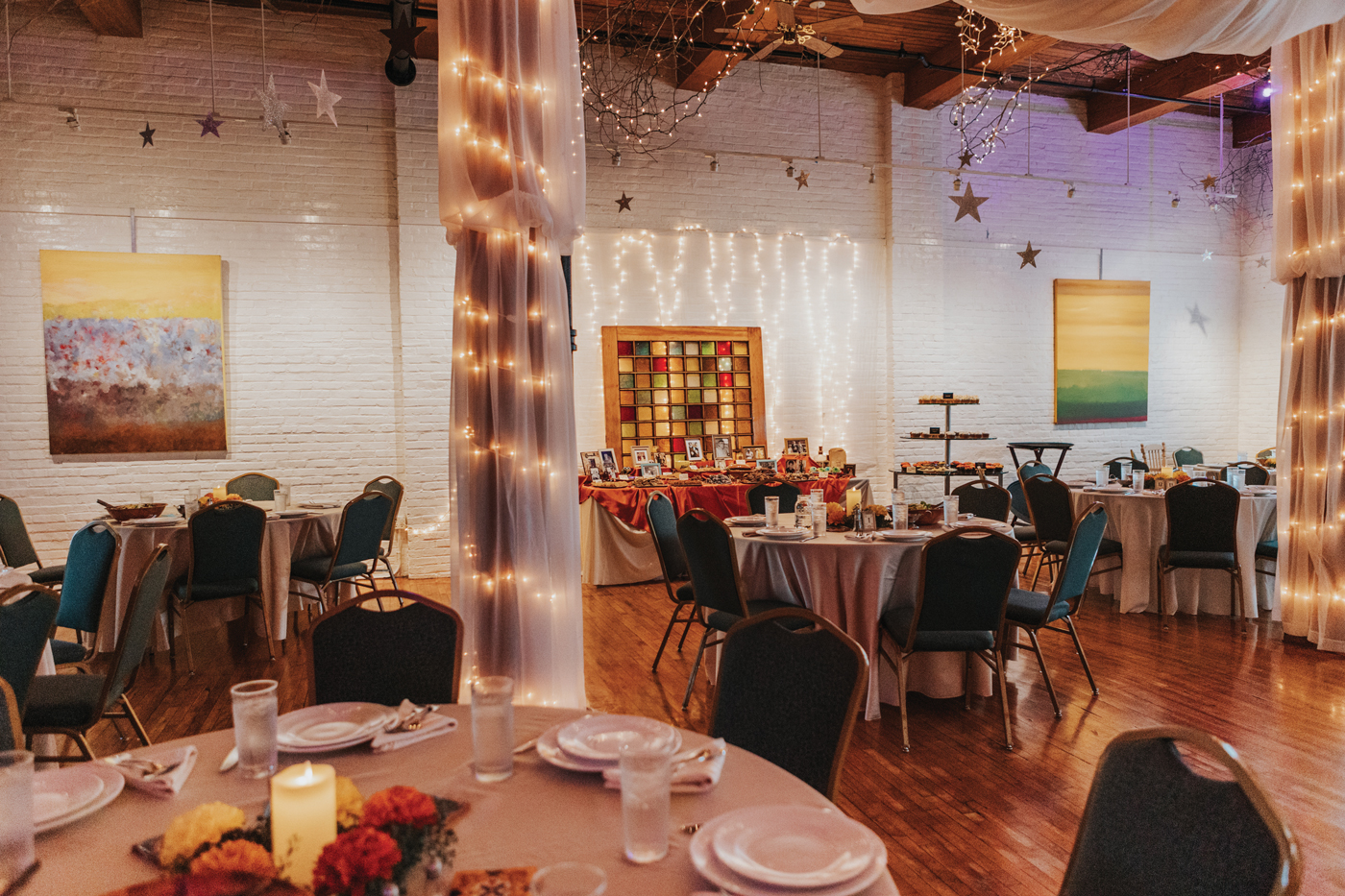
A year after their wedding, Ashley and Matthew held a wedding/anniversary reception at Mulberry Art Studios in Lancaster.
Ashley and Matthew did practice their vows beforehand. “The first time we shared our vows, it was in private. I’m so glad we did because I bawled,” Ashley recalls. “They were happy tears but Matthew wasn’t so sure at first. I would not have wanted my friends and family to see those reactions!” Practicing their vows together provided Ashley and Matthew with the confidence that what they had written was on the right track. “I believe we both made a few edits,” she reports.
Favorite Memory
Ashley and Matthew have several, including the fact that despite hosting a very small wedding, it had some large ramifications. “I adore that we were able to vote [they dropped off their ballots at the courthouse], marry ourselves and celebrate my birthday [Halloween] and Día de los Muertos all in the same day!” says Ashley, noting that October 31 has gained another reason for celebration – their wedding anniversary – in the Goss-Bushong household.
Despite having to forgo a large wedding – for the time being – Ashley discovered a small wedding can be just as meaningful. “Being able to spend the day with our families and close friends in the familiar setting of my parents’ house and being able to share that intimate moment of uniting ourselves in marriage with them and those watching via Twitch was very meaningful,” she says.
However, the larger reception did have its rewards. “It was so nice to finally get to do our first dance,” she says.
One aspect of the wedding is still on hold. Their honeymoon! The two snow lovers want to experience Quebec’s Winter Carnival, which is held the first two weeks of February. Now that the Canadian border is open again, they are making honeymoon plans!
Credits
October 31, 2020 and 2021
Photographer: Margarita Photography, Baltimore
(margarita-photography.com)
Videographer: Rob Goss, Goose Media, Philadelphia
Groom’s Suit: Online from StudioSuits.com
Florals: Central Market Flowers
Makeup: Oui Cosmetics & Glam Studio, Pittsburgh
October 31, 2020
Bridal Gown: Online from torrid.com
Hair: Luxe Salon & Spa
Caterer: Lancaster Dispensing Company
Cake: Holly Palacios
October 31, 2021
Bridal Gown: Online from Azazie.com
Hair: Ego Trip Hair Salon
Venue: Mulberry Art Studios
Catering: Catering by John Lowe
Cupcakes: That Awesome Little Bakery/Courtney Wooters
DJ: Jim Marlin


